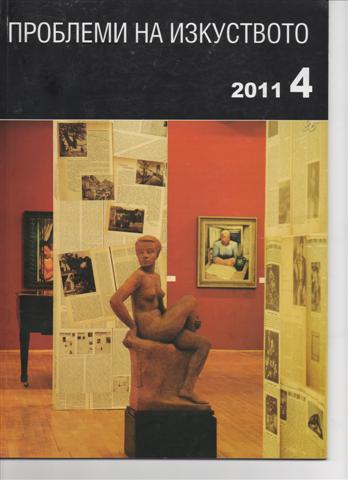Мястото на натюрморта в българското изкуство от 30-те години на XX век
The Importance of the Still Life in Bulgarian Art of the 1930s
Author(s): Kristina DinevaSubject(s): Fine Arts / Performing Arts
Published by: Институт за изследване на изкуствата, Българска академия на науките
Summary/Abstract: Still life became popular in Bulgaria at the end of the 19th and the beginning of the 20th century. One of the first artists to work in this genre was Constantine Velichkov, Petko Klisurov, Nikola avramov, Elissaveta Konsulova-Vazova. By using the artistic-visual principles used by the Bulgarian art- ists in the beginning of the century the still life turned into a powerful genera- tor of stylistic and formal plastic problems in the creative work of the New artists during the 1930s. as this was the case with the West European artists at the end of the 19th century, still life turned into a unique creative laboratory for the Bulgarian artists from the 1930s. The genre became a starting point for the elaboration of different art problems connected with composition, perspective, form, use of color. As a result of this the New artists constructed a new type of pictorial system and enriched the genre structure of Bulgarian art. Almost all artists from the association of New artists work in the genre of still life – these were Bencho Obreshkov, David Peretz, Ivan Nenov, Boris Ivanov, Eliazer Alsheh, Vera Nedkova and many others. During the 1930s for the first time in Bulgarian art working in the genre of still life started to be perceived as a pictorial-compositional ‘picture’ problem. Bencho Obreshkov was one of the first Bulgarian artists who openly declared the problem of the painting as a creative category with his still lives.
Journal: Проблеми на изкуството
- Issue Year: 2011
- Issue No: 4
- Page Range: 33-38
- Page Count: 6
- Language: Bulgarian
- Content File-PDF

